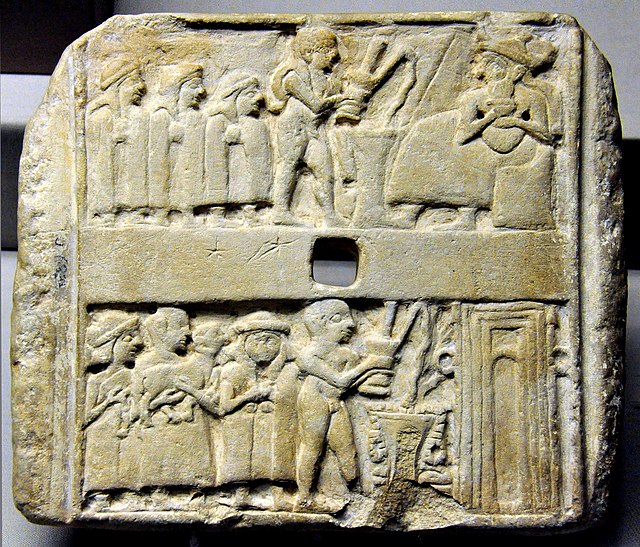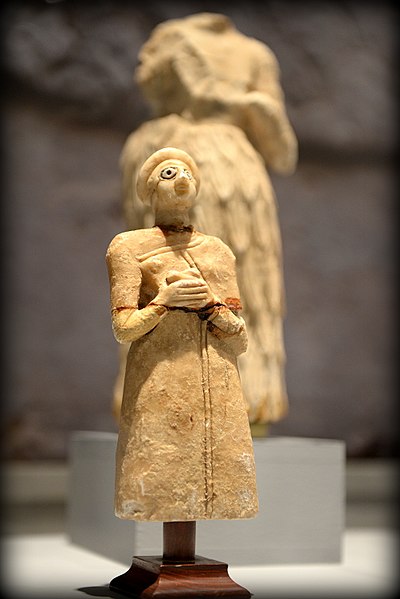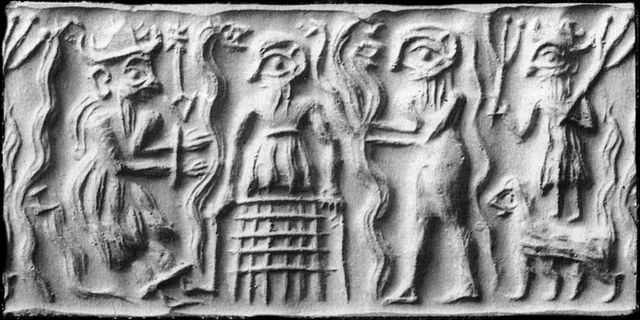Sumerian religion
Videos
Page
Sumerian religion was the religion practiced by the people of Sumer, the first literate civilization found in recorded history and based in ancient Mesopotamia. The Sumerians regarded their divinities as responsible for all matters pertaining to the natural and social orders.

Wall plaque showing libations by devotees and a naked priest, to a seated god and a temple. Ur, 2500 BCE.

Plaque with a libation scene. 2550-2250 BCE, Royal Cemetery at Ur.

Statuette of a Sumerian worshipper from the Early Dynastic Period, ca. 2800-2300 BC

Ancient Sumerian cylinder seal impression showing the god Dumuzid being tortured in the Underworld by galla demons
Anu
Videos
Page
Anu or Anum, originally An, was the divine personification of the sky, king of the gods, and ancestor of many of the deities in ancient Mesopotamian religion. He was regarded as a source of both divine and human kingship, and opens the enumerations of deities in many Mesopotamian texts. At the same time, his role was largely passive, and he was not commonly worshipped. It is sometimes proposed that the Eanna temple located in Uruk originally belonged to him, rather than Inanna, but while he is well attested as one of its divine inhabitants, there is no evidence that the main deity of the temple ever changed, and Inanna was already associated with it in the earliest sources. After it declined, a new theological system developed in the same city under Seleucid rule, resulting in Anu being redefined as an active deity. As a result he was actively worshipped by inhabitants of the city in the final centuries of the history of ancient Mesopotamia.

Symbols of various deities, including Anu (bottom right corner) on a kudurru of Ritti-Marduk, from Sippar, Iraq, 1125–1104 BCE

A foundation figurine of king Lugal-kisalsi. The inscription mentions Nammu and Anu as wife and husband.

Part of the front of a Babylonian temple to Ishtar in Uruk, built c. 1415 BCE, during the Kassite Period (c. 1600—1155 BCE). It has been argued in the past that it was first dedicated to Anu, and only later to Inanna, but this view is no longer regarded as plausible.

The original Sumerian clay tablet of Inanna and Ebiḫ, which is currently housed in the Oriental Institute at the University of Chicago